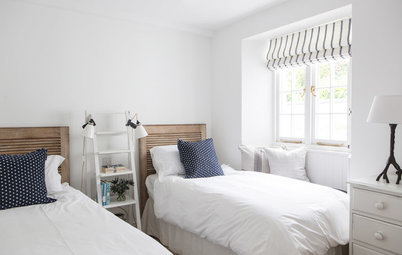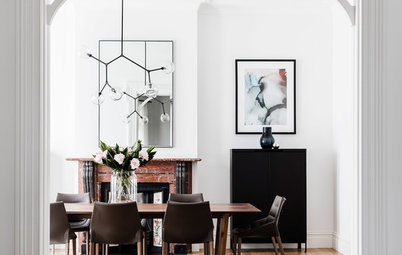Decorating
Shining the Light on Good Lighting Design
Whether you're hiring a professional lighting designer or tackling the job yourself, here are 10 of the most important things to consider
Lighting design is often seen as somewhat of a speciality service, and the majority of people who employ a designer specifically for their lighting are new to it. If you haven’t worked with a lighting designer before, read on to find out what you need to know to make the most of his or her services on your home renovation project.
2. You can put light where you want it
Resist the temptation to deliver an even coverage of light across all your space: if you light everything evenly, you’ll end up highlighting nothing. Also, this is your home, not an office with regulatory lighting demands. So have some fun with it; plan for how you’re going to use the space and what you need the light for.
A lighting designer should be able to give you great, shadow-free task lighting on your work surfaces, good ambient lighting, and interesting accent lighting to pick out focal points and areas of interest in your design.
Resist the temptation to deliver an even coverage of light across all your space: if you light everything evenly, you’ll end up highlighting nothing. Also, this is your home, not an office with regulatory lighting demands. So have some fun with it; plan for how you’re going to use the space and what you need the light for.
A lighting designer should be able to give you great, shadow-free task lighting on your work surfaces, good ambient lighting, and interesting accent lighting to pick out focal points and areas of interest in your design.
3. You shouldn’t treat LED as you would halogen
LED has largely replaced halogen in new builds and renovations requiring Building Control. However, they are very different light sources and need a different approach in design. Things you need to consider are colour temperature, output (the amount of light a fitting delivers), beam width and colour rendering (how accurately a fitting renders specific colours). You also need to consider how you’re going to dim the lighting. LED behaves very differently when being dimmed and you don’t want nasty surprises.
It’s really best to test the light sources you’re planning to use to make sure you’re happy with the quality of light. Ask your lighting designer to show you fittings and lighting control in action.
LED has largely replaced halogen in new builds and renovations requiring Building Control. However, they are very different light sources and need a different approach in design. Things you need to consider are colour temperature, output (the amount of light a fitting delivers), beam width and colour rendering (how accurately a fitting renders specific colours). You also need to consider how you’re going to dim the lighting. LED behaves very differently when being dimmed and you don’t want nasty surprises.
It’s really best to test the light sources you’re planning to use to make sure you’re happy with the quality of light. Ask your lighting designer to show you fittings and lighting control in action.
4. It’s OK to be absolutely clear on budget
This space is part of a wonderful project created on a very modest budget. Be clear with your lighting designer on how much you have to spend. A good designer will be able to work at different budget levels and will also be able to tell you if what you’d like to achieve is realistic or not.
If you and your designer have an open discussion on budget and you keep an eye on the scheme as the detail is developed, it will make for a much more productive relationship.
This space is part of a wonderful project created on a very modest budget. Be clear with your lighting designer on how much you have to spend. A good designer will be able to work at different budget levels and will also be able to tell you if what you’d like to achieve is realistic or not.
If you and your designer have an open discussion on budget and you keep an eye on the scheme as the detail is developed, it will make for a much more productive relationship.
5. You need to consider year-round requirements
While natural daylight is a fantastic light source, your lighting designer will want to make sure your scheme works year round. Think about how a space is going to look and feel at 4pm on a June afternoon as compared to 11am on a morning in November.
Talk to your designer about how you’re going to make dark spaces feel warm and welcoming when there’s no natural daylight to support your artificial lighting sources.
While natural daylight is a fantastic light source, your lighting designer will want to make sure your scheme works year round. Think about how a space is going to look and feel at 4pm on a June afternoon as compared to 11am on a morning in November.
Talk to your designer about how you’re going to make dark spaces feel warm and welcoming when there’s no natural daylight to support your artificial lighting sources.
6. Special features can be beautifully showcased with the right lighting
The more you can visualise how your space is going to be used and the look and feel you’re trying to achieve, the richer the lighting design can be. Lighting supports and complements the interior design and can take advantage of the features you’re planning.
In this beautiful modern bedroom, the floating bed is accentuated by a simple under-lighting scheme, which sees the bed floating on a cushion of light.
18 ways lighting can set the mood
The more you can visualise how your space is going to be used and the look and feel you’re trying to achieve, the richer the lighting design can be. Lighting supports and complements the interior design and can take advantage of the features you’re planning.
In this beautiful modern bedroom, the floating bed is accentuated by a simple under-lighting scheme, which sees the bed floating on a cushion of light.
18 ways lighting can set the mood
7. It’s important to have someone planning all practicalities
You don’t necessarily need to plan driver locations, cable lengths and waterproof connections for external lighting and so on all by yourself, but you do need to make sure someone is covering it.
Your lighting design should be a practical pack with detailed drawings and wiring schedules, and your electrician should feel confident he or she has all the necessary information to turn the plan into a reality. Make sure your electrician and lighting designer are communicating regularly and you should have a much smoother project.
You don’t necessarily need to plan driver locations, cable lengths and waterproof connections for external lighting and so on all by yourself, but you do need to make sure someone is covering it.
Your lighting design should be a practical pack with detailed drawings and wiring schedules, and your electrician should feel confident he or she has all the necessary information to turn the plan into a reality. Make sure your electrician and lighting designer are communicating regularly and you should have a much smoother project.
8. Variety is key
The options now available with LED lighting offer great opportunities for layering your light. For instance, miniature 1W LED fittings can be used to create low-level accent lighting in niches, on ledges and in the floor.
Building your lighting up in layers will give you a richer scheme as well as offering the option of different lighting scenes, including late-night dim settings ideal for a relaxing soak.
The options now available with LED lighting offer great opportunities for layering your light. For instance, miniature 1W LED fittings can be used to create low-level accent lighting in niches, on ledges and in the floor.
Building your lighting up in layers will give you a richer scheme as well as offering the option of different lighting scenes, including late-night dim settings ideal for a relaxing soak.
9. It’s essential to have an open mind
Talk to your designer about different lighting approaches; there’s so much more you can do than carpet bomb a space with downlights. This glazed dining room is a great example. A space like this forces the designer to look at alternative locations to fix the lighting, as most of the space is glass.
Custom brackets allow the suspended lighting strip to create intimate dining light, while floor-recessed, colour-changing uplights provide a different perspective, framing the windows and doors.
Clever lighting ideas you may not have thought of
Talk to your designer about different lighting approaches; there’s so much more you can do than carpet bomb a space with downlights. This glazed dining room is a great example. A space like this forces the designer to look at alternative locations to fix the lighting, as most of the space is glass.
Custom brackets allow the suspended lighting strip to create intimate dining light, while floor-recessed, colour-changing uplights provide a different perspective, framing the windows and doors.
Clever lighting ideas you may not have thought of
10. Don’t forget to make the most of natural daylight
Natural daylight is obviously the most wonderful light source – full bandwidth, great colour and invigorating or calming, depending on the time of day.
There are ways you can better manage the amount of daylight as part of your lighting scheme, however. One way it can be made a lot easier is by introducing electrically powered curtains and blinds. Lighting control systems can put lighting and blind controls together on the same discreet wall keypad, or you can control everything from your tablet or smartphone.
TELL US
What do you wish you’d known about lighting before you started your project? Share your experiences in the Comments below.
MORE
Browse statement lighting ideas
Natural daylight is obviously the most wonderful light source – full bandwidth, great colour and invigorating or calming, depending on the time of day.
There are ways you can better manage the amount of daylight as part of your lighting scheme, however. One way it can be made a lot easier is by introducing electrically powered curtains and blinds. Lighting control systems can put lighting and blind controls together on the same discreet wall keypad, or you can control everything from your tablet or smartphone.
TELL US
What do you wish you’d known about lighting before you started your project? Share your experiences in the Comments below.
MORE
Browse statement lighting ideas


















If you only take one idea from this guide, make sure it’s this. The single biggest mistake people make when planning lighting is leaving it too late in the process. The temptation is to consider lighting as a first fix item, because that’s when the cabling goes in. But, first fix is the time to implement your lighting design, not start planning it.
In this bathroom, the cabling and installation sleeves were installed 18 months before the bath was put in. Planning ahead means you can work around the other demands of your build – in this case, the need to lay the screed for the underfloor heating.
Avoid disasters with these essential planning tips